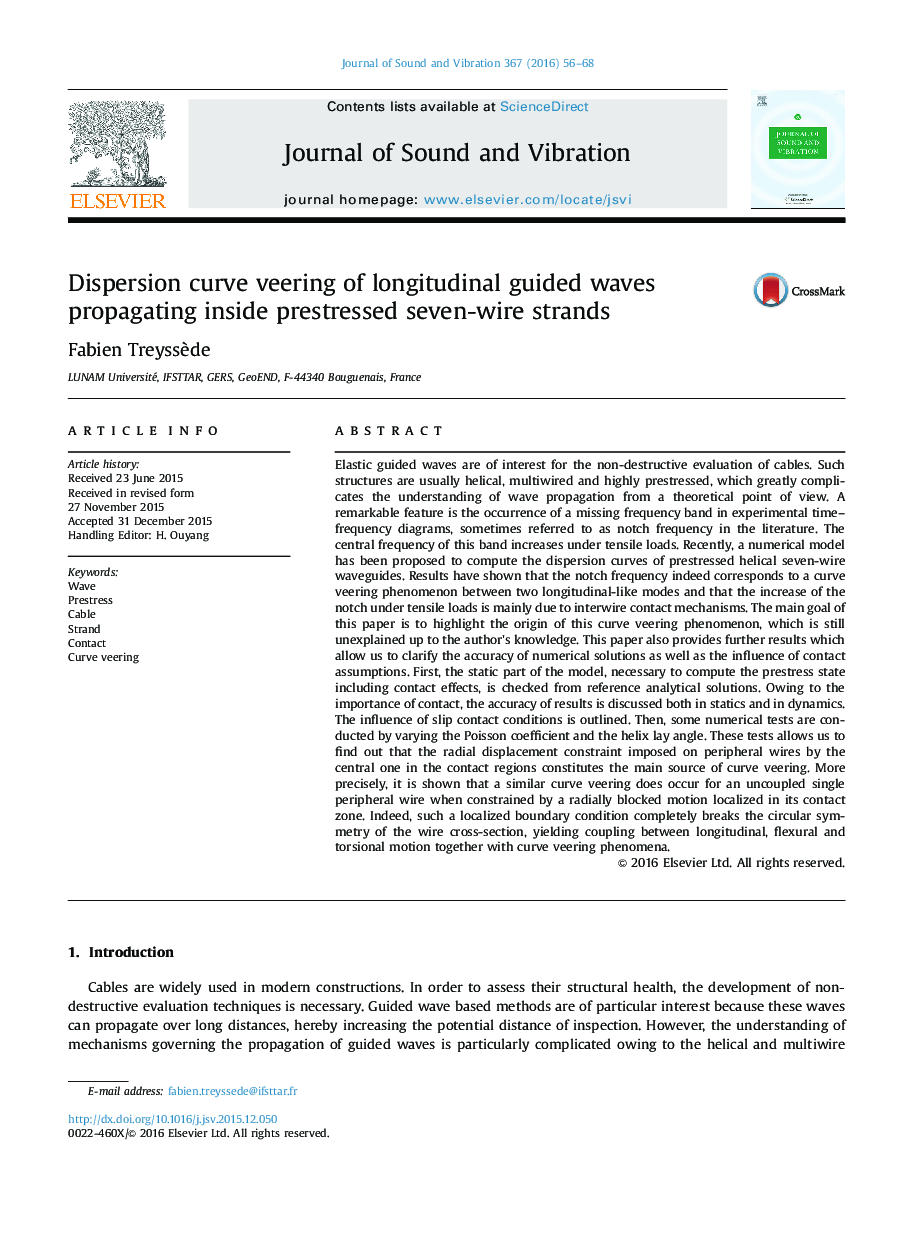| Article ID | Journal | Published Year | Pages | File Type |
|---|---|---|---|---|
| 6754656 | Journal of Sound and Vibration | 2016 | 13 Pages |
Abstract
Elastic guided waves are of interest for the non-destructive evaluation of cables. Such structures are usually helical, multiwired and highly prestressed, which greatly complicates the understanding of wave propagation from a theoretical point of view. A remarkable feature is the occurrence of a missing frequency band in experimental time-frequency diagrams, sometimes referred to as notch frequency in the literature. The central frequency of this band increases under tensile loads. Recently, a numerical model has been proposed to compute the dispersion curves of prestressed helical seven-wire waveguides. Results have shown that the notch frequency indeed corresponds to a curve veering phenomenon between two longitudinal-like modes and that the increase of the notch under tensile loads is mainly due to interwire contact mechanisms. The main goal of this paper is to highlight the origin of this curve veering phenomenon, which is still unexplained up to the author׳s knowledge. This paper also provides further results which allow us to clarify the accuracy of numerical solutions as well as the influence of contact assumptions. First, the static part of the model, necessary to compute the prestress state including contact effects, is checked from reference analytical solutions. Owing to the importance of contact, the accuracy of results is discussed both in statics and in dynamics. The influence of slip contact conditions is outlined. Then, some numerical tests are conducted by varying the Poisson coefficient and the helix lay angle. These tests allows us to find out that the radial displacement constraint imposed on peripheral wires by the central one in the contact regions constitutes the main source of curve veering. More precisely, it is shown that a similar curve veering does occur for an uncoupled single peripheral wire when constrained by a radially blocked motion localized in its contact zone. Indeed, such a localized boundary condition completely breaks the circular symmetry of the wire cross-section, yielding coupling between longitudinal, flexural and torsional motion together with curve veering phenomena.
Related Topics
Physical Sciences and Engineering
Engineering
Civil and Structural Engineering
Authors
Fabien Treyssède,
